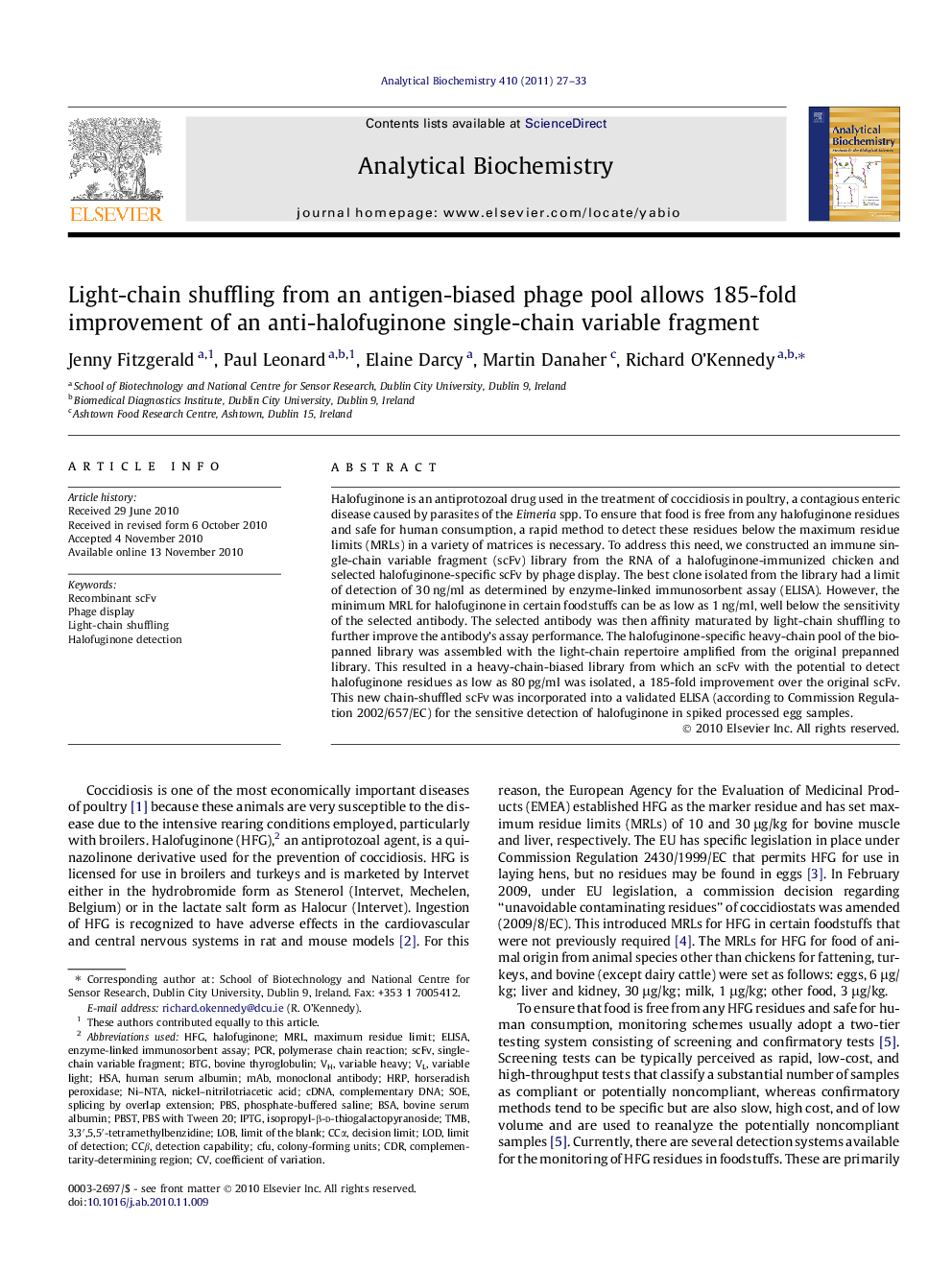| Article ID | Journal | Published Year | Pages | File Type |
|---|---|---|---|---|
| 1174691 | Analytical Biochemistry | 2011 | 7 Pages |
Halofuginone is an antiprotozoal drug used in the treatment of coccidiosis in poultry, a contagious enteric disease caused by parasites of the Eimeria spp. To ensure that food is free from any halofuginone residues and safe for human consumption, a rapid method to detect these residues below the maximum residue limits (MRLs) in a variety of matrices is necessary. To address this need, we constructed an immune single-chain variable fragment (scFv) library from the RNA of a halofuginone-immunized chicken and selected halofuginone-specific scFv by phage display. The best clone isolated from the library had a limit of detection of 30 ng/ml as determined by enzyme-linked immunosorbent assay (ELISA). However, the minimum MRL for halofuginone in certain foodstuffs can be as low as 1 ng/ml, well below the sensitivity of the selected antibody. The selected antibody was then affinity maturated by light-chain shuffling to further improve the antibody’s assay performance. The halofuginone-specific heavy-chain pool of the biopanned library was assembled with the light-chain repertoire amplified from the original prepanned library. This resulted in a heavy-chain-biased library from which an scFv with the potential to detect halofuginone residues as low as 80 pg/ml was isolated, a 185-fold improvement over the original scFv. This new chain-shuffled scFv was incorporated into a validated ELISA (according to Commission Regulation 2002/657/EC) for the sensitive detection of halofuginone in spiked processed egg samples.
